“Breakdice”: Offloading Your Executive Function to Recharge Your Brain
#NoAI required; just physics, paper, and tape.
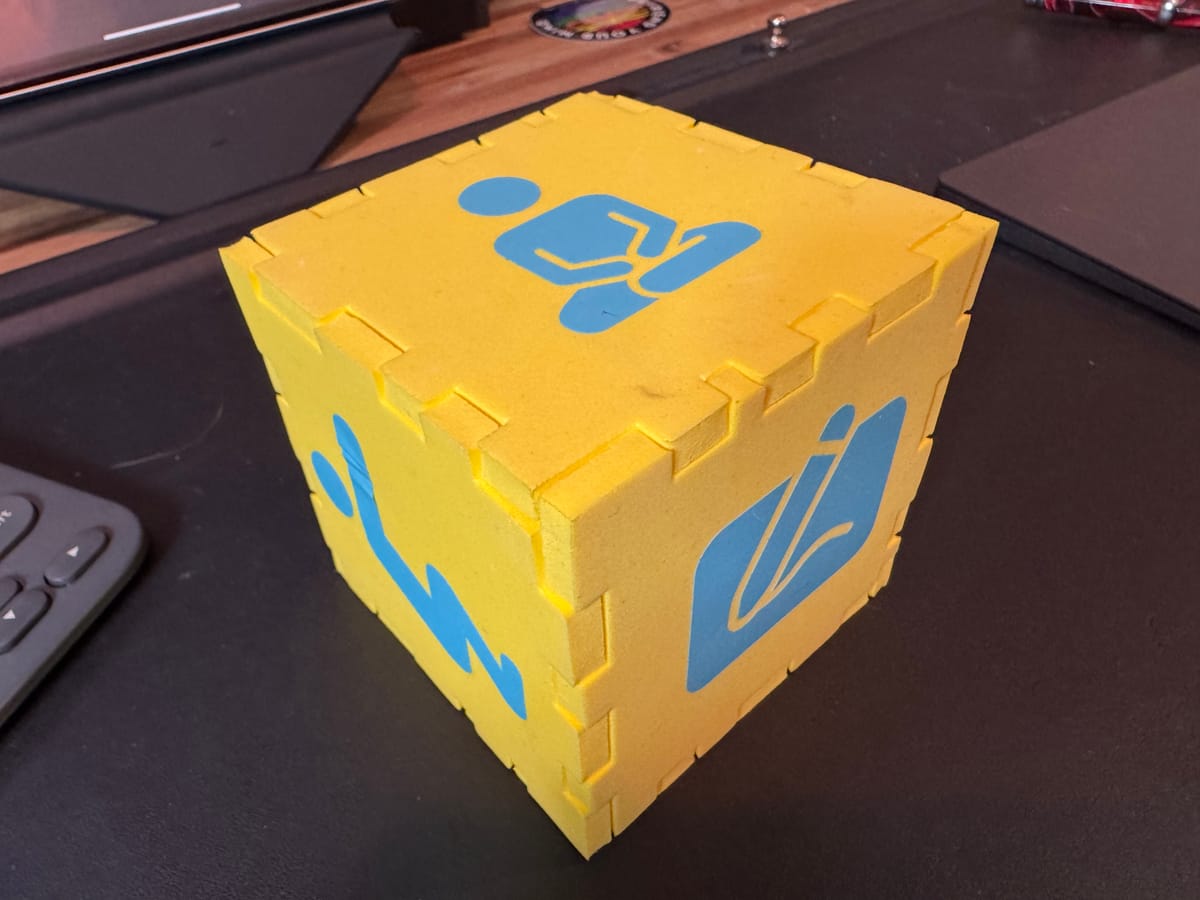
Hey, you with the ADHD brain, pop quiz: give me your top three tips for sustaining focus at work!
I’ll wait…
…
…
…Ok, I’m not that great at waiting. But if you made the list, I bet that for most, if not all of you, one of the strategies you listed was the good ‘ol pomodoro technique.
Named after a tomato-shaped timer (optional), it usually means setting a timer for 25 minutes for focused work, and then when the timer went off you took a five-minute break. After three or four of these cycles, you’d take a fifteen minute break.
This article is not about pomodoros.
It’s about the problem with pomodoros, particularly for ADHD brains, and the crafty (not bragging, literally it’s a craft project) way that I found to solve them.
“Break” is a deceptive word.
Here’s the issue: if I tell you that you can “take a break”, the odds are that you will pull out your phone to check socials, messages, read the latest post from your favorite Medium or Substack writer, something like that.
And that’s fine — if the “focused work” you’re taking a break from doesn’t involve sitting on your butt looking at a screen. For most of the folks reading this, though, it probably does — so your “break” isn’t actually giving your body and mind a reset or a recharge. Instead, you’re just substituting one task for another — and likely adding a little stress and outrage to the mix, because you’re looking at an algorithm designed to infuriate you.
XXX insert drawing of phone scroll with lots of angry stuff
Many ADHD and productivity coaches suggest a simple solution: do something else.
For those who are “neurotypical”, I get the impression that’s all they need to hear. “What, pick something else to do?” looks around for a second “Ok, sure, I’ll just do this!” And off they go, hiking through woods or making crème brûlée or whatever it is they do.
An ADHD brain, on the other hand, tends to freeze up. “Do something else” becomes a paralyzing infinite loop because the category of “else” literallyoccupies the entire universe.
Of course, ADHD advocates and coaches have come up with ways to constrain this — How to ADHD has a great video on it, in fact, and I’ll link to it later.
For now, stick with me — we’re almost to what this is really about — and there’s a freebie at the end, too!
Where was I? Oh, yes — the dopamenu! This is a list of things (somewhat smaller than the “everything else” list) that you know will recharge you. They are somewhat personalized, but there are a lot of things in common.
For example, very rarely does a dopamenu include “doomscrolling on social media.” But my own would include things like:
- Playing my guitar.
- Writing in my journal (by hand, no screens!).
- Doing a quick high-energy workout.
- Meditating with a focus on breathing.
- Reading graphic novels (again, preferably not on a screen).
- Do some hand lettering or calligraphy.
Perfect! Now I only have to choose one of six things!
Yeah. I know. Still too many. By the time I choose one, I likely will only have about two minutes of my five minute break left. And if it’s a “long break” — fifteen minutes — that makes it even worse, because to a time-blind mind “fifteen minutes” is the same as “thirty-seven eternities” and boredom manifests in the body as pain. Whatever I pick had better be good for that fifteen minutes.
As the crusader said: Choose wisely.
Or…maybe I don’t choose at all?
Offloading your executive function like a Gargoyles Villain.
“The key to strategy, little Vor,” she explained kindly, “is not to choose a path to victory, but to choose so that all paths lead to victory.” — Cavilo in “The Vor Game” by Lois McMaster Bujold
Remember David Xanatos? The villain from Gargoyles?
Yeah, me neither. I never really watched it. But apparently he was famous for his beyond-Machiavellian schemes in which no matter what happened or who won a conflict, he would benefit.
Which is exactly what the villain Cavilo was explaining to Miles Vorkosigan in that quote. And I’ve read all of Bujold’s work, some multiple times, enough that the phrase stuck with me. It was only while researching the origin (likely General Zhang Yingyu’s sixth century treatise on being sneaky, The Thirty-Six Stratagems) that I found out it’s usually known as the Xanatos Gambit.
Anyway, the trick with the dopamenu is to apply this strategy. It doesn’t matter what I pick to do, it will both recharge my brain and also keep me entertained.
And you may have noticed: there are six choices. Ah ha! I can just roll a six-sided die, and let random chance decide which thing I’ll do!
The fastest way to do this would be to simply say out loud “Siri, pick a random number between one and six.”
The simplest way to do it would be to grab a die from whatever game is getting dusty on my shelf, and have a little sticky note with a list of the choices on my desk.
Frequent readers of my work will be unsurprised: I did not choose the fastest nor the simplest way. I tried them both, just to be fair, but it became blindingly obvious quickly that I needed to do it my way.
And so I present to you: the Breakdice.
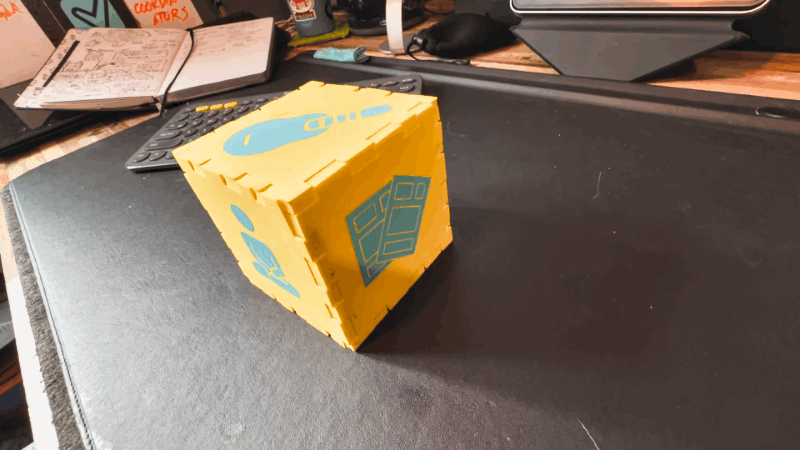
A fidget toy, surprise present, and therapeutic aid in a simple cube.
First: yes, I know. There’s only one cube, so technically this is a “breakdie.” But those two words sound a little too threatening, so I chose the plural.
My personal breakdice is made out of craft foam, a bright yellow. I also chose icons from The Noun Project (which I have a license for) to represent the items on my dopamenu. I used my local makerspace, the Bodgery, to cut them out of re-stickable vinyl, and put one on each side.
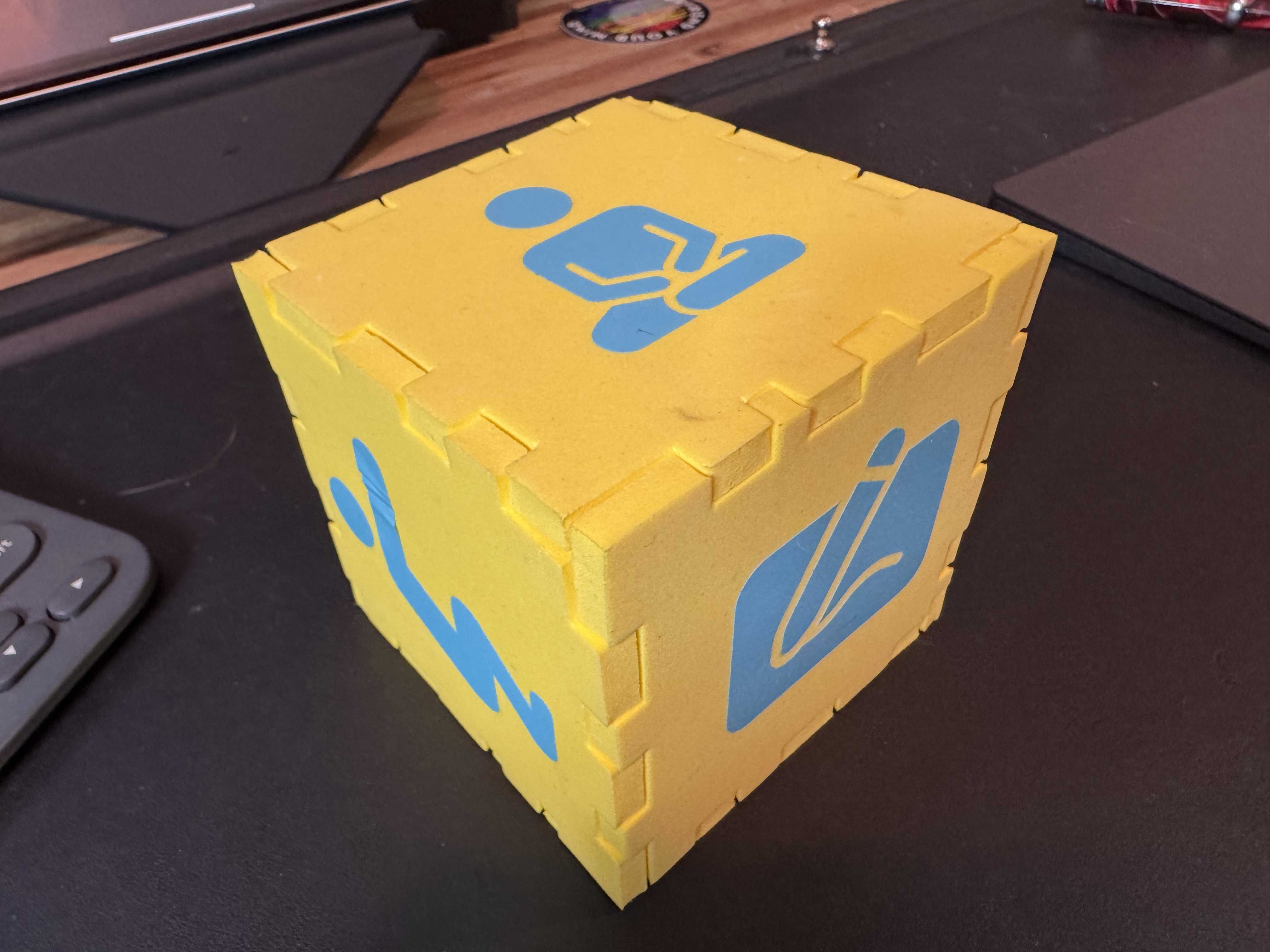
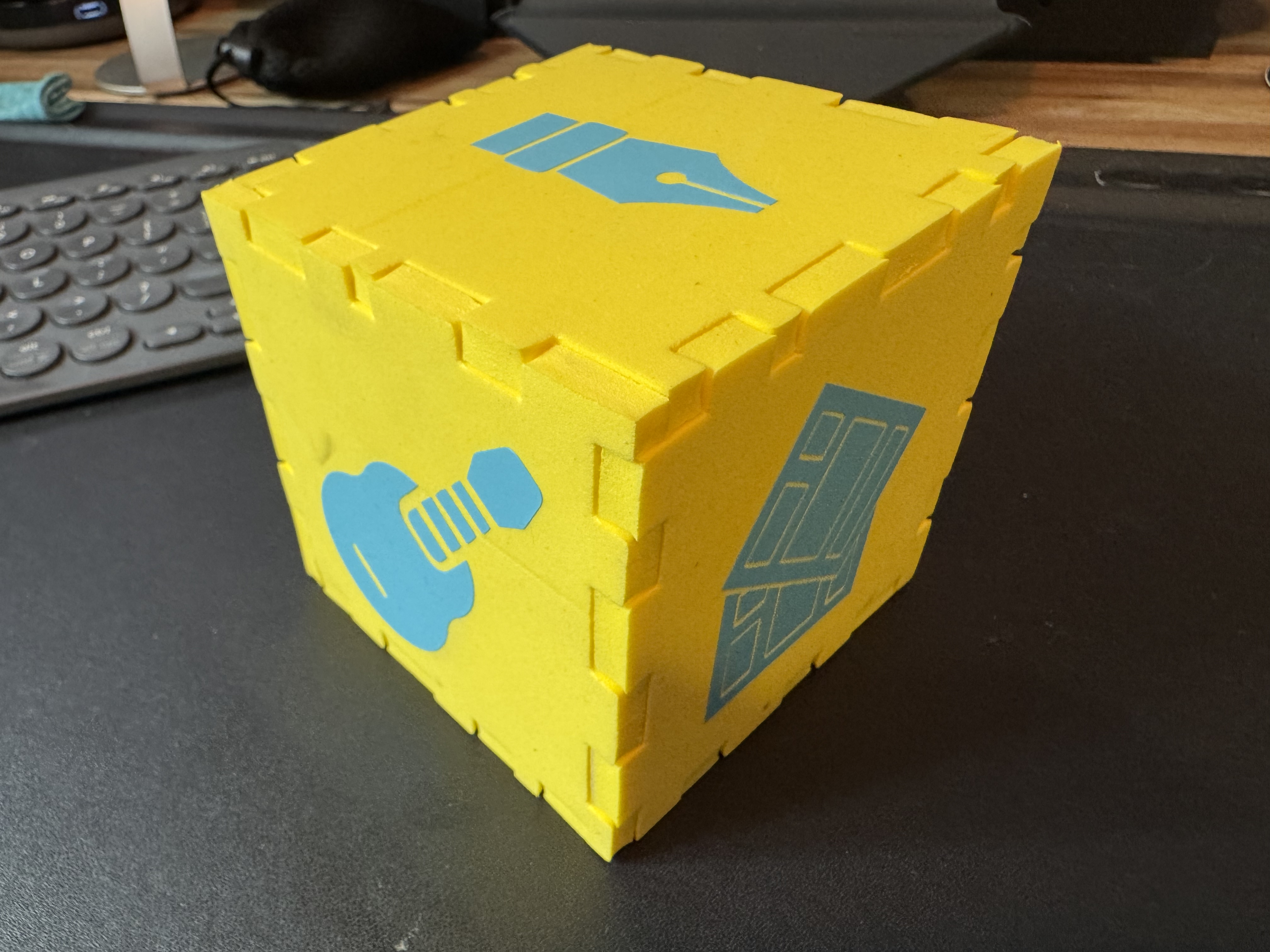
The cube is soft and fun to toss around. It’s also a bright and motivating presence on my desktop.
Most importantly, I don’t have to choose anything except to roll it when my pomodoro timer goes off.
I don’t have to find a list, I don’t have to think up options, I don’t have to pick any of those options.
Ping. Roll “Ok, guitar it is! Siri, set the timer for five minutes.”
And that’s several less decisions I have to make during the day.
But Gray — what if you don’t want to do the thing that the cube says?
Well, first of all, that’s unlikely, because the cube is filled with things that I actually enjoy and don’t give myself enough time for in the first place. So the odds of me saying “Aw, damn, I didn’t want to read comics/get swole/write for five minutes” is pretty slim.
But it does happen. And that’s when I get to make use of another fun aspect of our brains, one that I’m too lazy to research the source.
Basically it works like this: if I think I don’t know what to choose, and I discover that I don’t like the one chosen at random — that’s almost always because I actually did have a preference. The one I really want to do is still there and available — the die roll just helped me realize it.
It’s a true Xanatos (or, as I prefer) Cavilo Gambit: no matter what, I win.
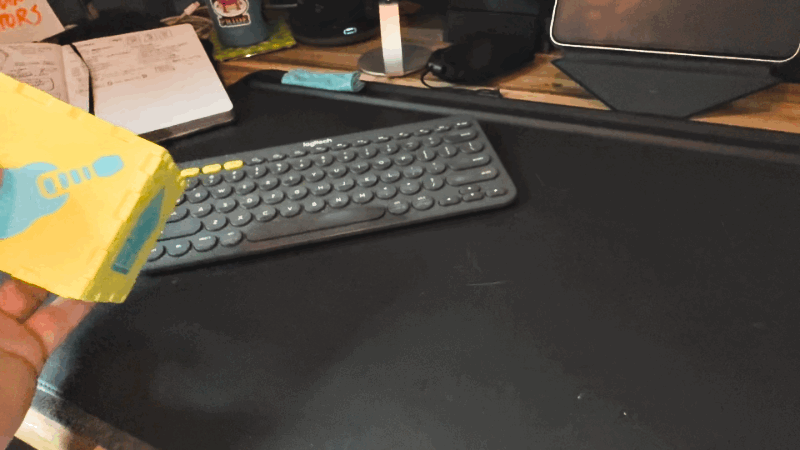
And you get a prize, too!
If my breakdice up there looks good to you, I’ve got a present for you! You can download a free printable PDF with a six-sided-dice pattern on it, either blank or with my icons on it.
I’m thinking of making some more fancy breakdice, like hand-calligraphed versions on fine paper, or a laser-engraved version made of wood or plexiglass. If those sound interesting to you, let me know in the comments, or email, or just sign up for my posts and you’ll hear about it when it’s ready!
I’d love to hear what you put on your breakdice — don’t be a stranger, let me know!


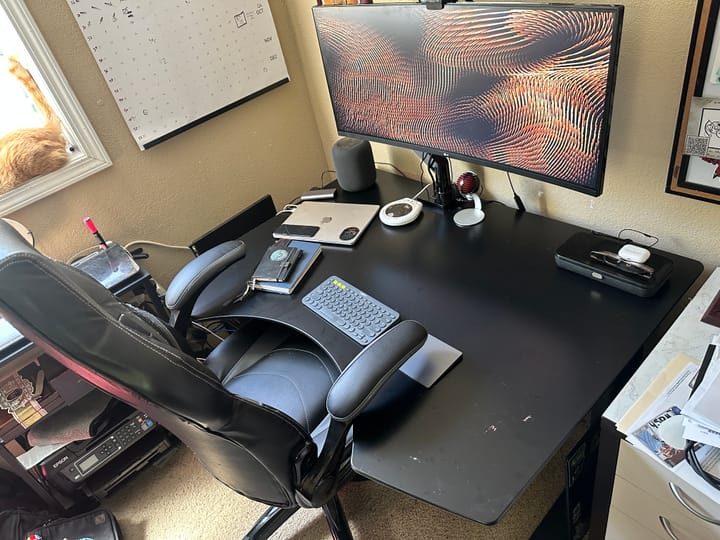
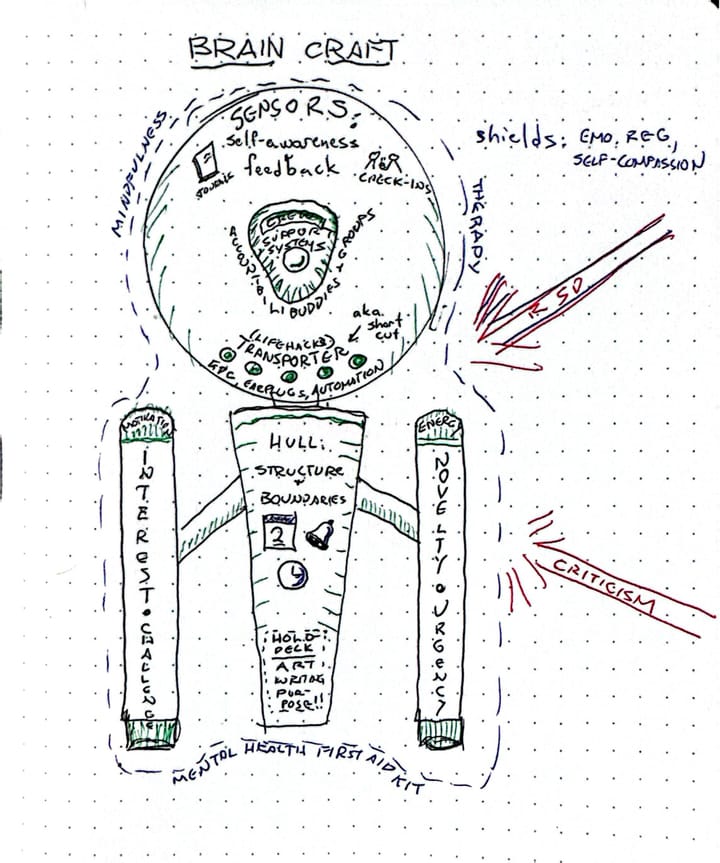
Comments ()